Xiaomi TV X Series (2023) 65-inch Review: Specifications and Price
- Panel Size: 65-inch (available in 43, 50, and 55-inch as well)
- Panel Type: LED LCD (mix of VA and IPS panel types)
- Panel Resolution: 3840 x 2160 – 4K UHD
- Panel Refresh Rate: 60Hz
- Supported HDR Formats: HDR10, Dolby Vision
- Speakers: 30W
- Audio formats: Supports Dolby Audio, DTS X and DTS Virtual: X
- Software: Google TV, Latest PatchWall, PatchWall+ | Free Live TV Channels
- HDMI Ports: 3x HDMI 2.1, HDMI 2 is eARC
- HDMI 2.1 features: eARC, ALLM
- Other connectivity options: 2 USB ports, Wi-Fi 5, Bluetooth 5, Ethernet, RF connection input, Headphone out, optical input
- Built-in storage: 8GB
- Price: MRP: 81,990; Best Price: Rs. 61,990
Xiaomi TV X Series (2023) 65-inch review: Design and Remote

The Xiaomi Smart TV X-series 65 features a fairly standard design that is more functional rather than premium. The positive aspect is that there are minimal distractions on the front. The bezels on three sides are narrow and are lined by a metal frame. The narrow plastic strip at the bottom has the Xiaomi branding on it and there is an LED indicator and a button underneath to manually power on the TV. While the TV feels solidly built, it is primarily made of plastic. This extends to the two stands that are bundled in the box. When mounted on these feet, the TV sits firm and stable in spite of its large size.
The frequently used ports including the three HDMI ports and USB ports are well spaced and positioned towards the side where they are easily accessible. The ethernet port, optical input and AV ports are positioned in an alcove towards the bottom where they are not as easily accessible.
If you have had some experience with Xiaomi TVs or streaming sticks in the past, you will be familiar with the remote. The remote is quite ergonomic to hold and has hotkeys for four popular apps – Netflix, Prime Video, Disney+Hotstar and Youtube. There are also dedicated keys for Patchwall and Google TV Home.

For mute, you can quickly double-press the volume down button. To pull up the Picture Modes and Input option, you can long-press either the Patchwall button or the Google TV Home button. You will need to learn these shortcuts or else switching between input sources and picture modes will feel very tedious.
Xiaomi TV X Series (2023) 65-inch review: Performance and Software
The Xiaomi Smart TV X-series is powered by a quad-core processor paired with 2GB RAM. The internal storage of 8GB (4.3GB available) should be workable in the long run if all you need to do is stream content from popular apps. After installing 8 to 10 apps that I frequently use, around 2.4GB remains free.
Many emerging brands these days offer 16GB storage in the affordable and mid-range segments. Tier-1 brands like Samsung, LG and Sony still stick to 8GB for most of their affordable and midrange options. The UI transitions are not particularly snappy, but we didn’t notice any lag in the interface either. This could change for the worse if you completely fill up the available storage.
The software is the latest Google TV interface along with a Patchwall loaded on top. Google TV perks like Google Assistant and Chromecast built-in work flawlessly.

The Pacthwall launcher tries to refine the content discovery experience for Indian users and it kind of works, especially for elderly people at home. My father finds it significantly simpler to use Patchwall and doesn’t require my assistant to pull up news or sports channels he needs to watch. The Patchwall+ is another feature we quite like. It aims to replicate a DTH-like interface to which many people cutting the chord are already accustomed. Once again, this is a useful edition for my parents who’ rather flick channels and watch whatever is currently on air. The problem is that the supported channels in my preferred languages are very limited. Xiaomi will hopefully fix these issues in time.
Xiaomi TV X Series (2023) 65-inch review: SDR picture quality

Let’s first look into the SDR picture quality, given that a significant portion of desi content still remains in this format. Right off the bat, we could notice that Xiaomi’s vivid colour engine is tuned for extra pop and not for strict colour accuracy.
For SDR content, the standard mode is the best available choice. Other modes including the Movie preset introduce an annoying reddish tint to skin tones while exaggerating colours to extreme.

Skin tones in Standard Mode (SDR)
The standard mode has slightly cooler whites than the reference and slightly oversaturated colours. By setting the colour gamut to rec.709 and gamma to 1886, we managed an average delta error of 6, which is not the lowest we have recorded but still fairly decent. The panel can reproduce 99.9% of the sRGB colour gamut used in SDR content. For those less concerned about strict colour accuracy, the added vibrancy in colours during daylight and well-lit indoor scenes could be appealing.

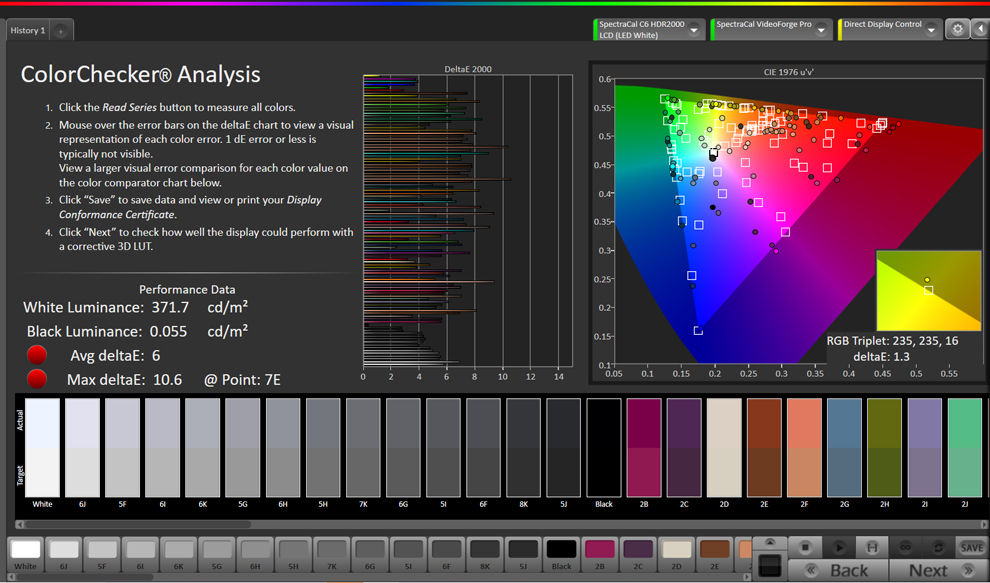
The gamma tracks below the standard towards higher luminance. This implies that certain details in brighter regions might not be as pronounced. Nevertheless, this wasn’t glaringly apparent in our assessment of bright SDR scenes during testing. We also didn’t notice any oversharpening on the TV with default settings in the standard mode.
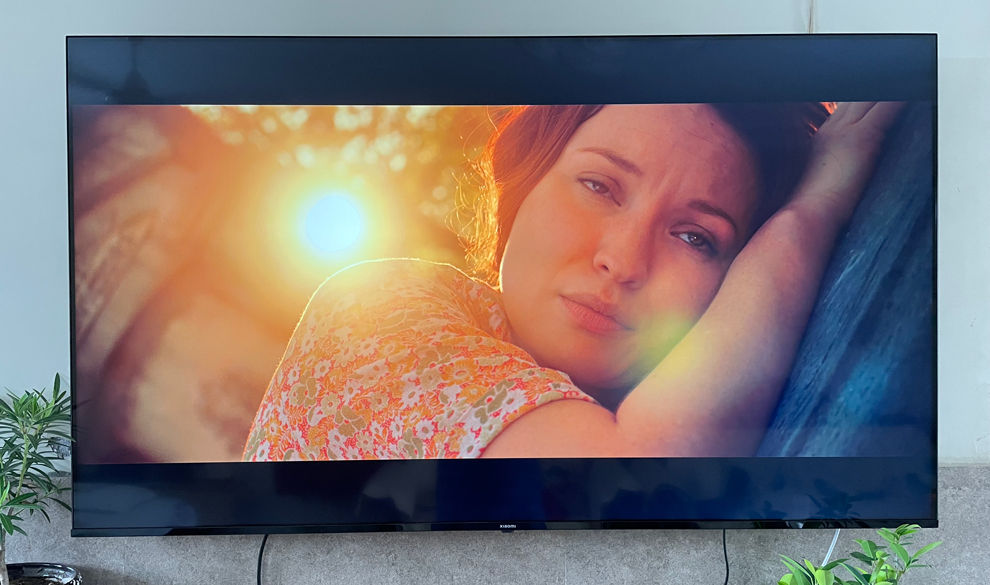
We recorded a native panel contrast of around 1250:1 for the panel in the Standard mode, and this is further enhanced with Global Dimming turned on. The upscaling performance for SDR content was above average as compared to other similarly priced options that we have tested.

Motion smoothening is enabled in all SDR and HDR presets save for Dolby Vision HDR. This does reduce motion blur in slow panning shots but induces a slight stutter and soap opera effect. We’d recommend that you turn it off or reduce the smoothing in the custom mode.
Xiaomi TV X Series (2023) 65-inch review: HDR Performance
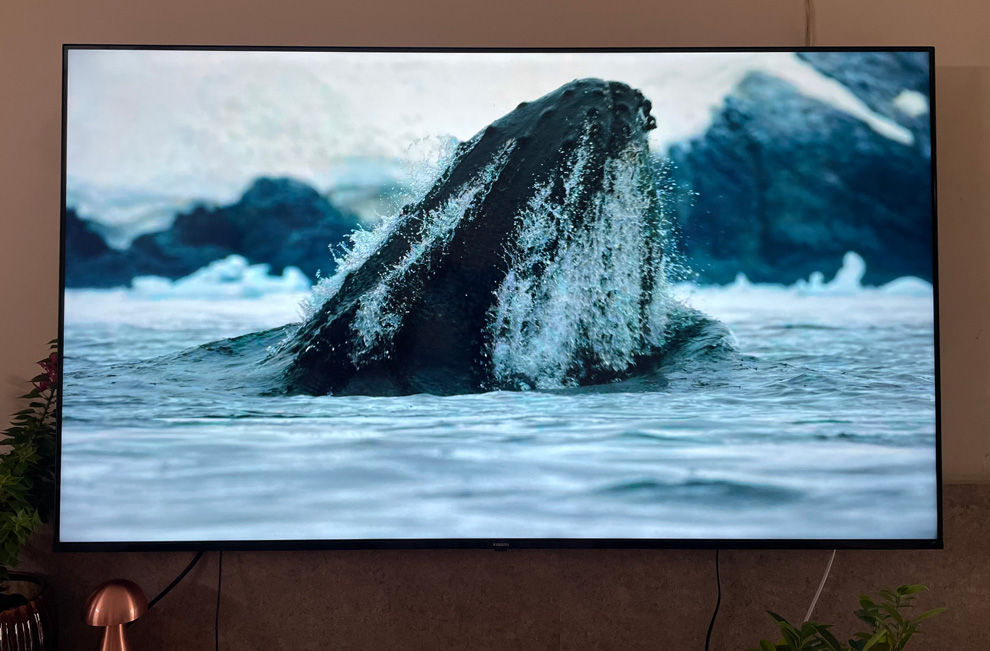
The Xiaomi X-series Smart TV boasts support for Dolby Vision, HDR10 and HLG formats. In terms of peak brightness, we registered a measurement of 375 nits, a standard figure when compared to affordable and lower mid-range television models. Observing the EOTF tracking curve, it’s clear that Xiaomi has fine-tuned the TV to maximize HDR impact using available dynamic range stops.

The TV follows the PQ transfer function for HDR more diligently with global dimming turned on. It slightly over tracks the EOTF curve in the brighter region, leading to some compromise in bright highlight details.

Challenges with skin tones persist in Dolby Vision content. In Dolby Vision, light skin tones exhibit a pinkish tint. These anomalies are more noticeable in dark scenes where characters are illuminated by warm sources like fire or lanterns. Despite this, the colours of the sky and foliage appear natural in Dolby Vision content.

In HDR10, the skin tones are best in the standard mode. Colours are also a tad oversaturated. We recorded an average delta error of 6.8.
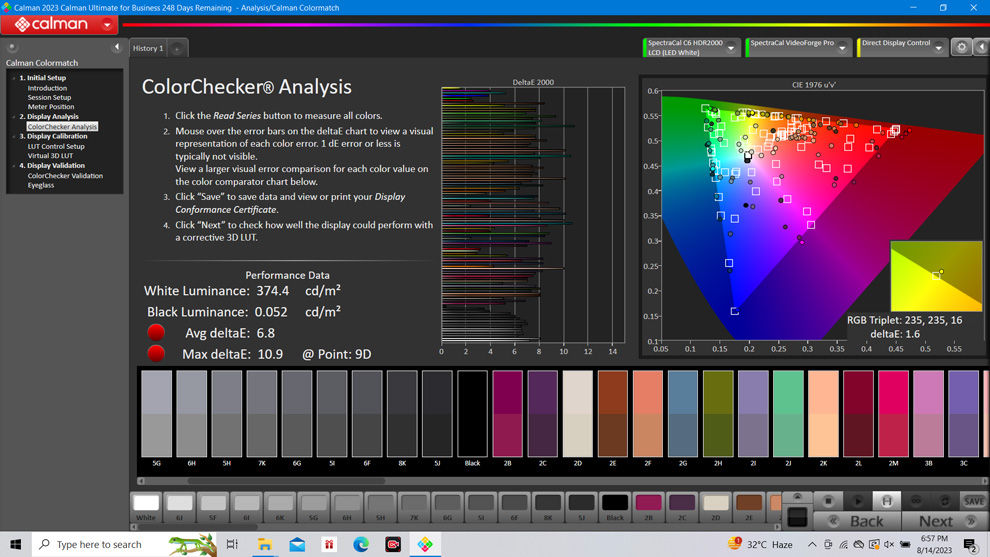
As shown in the image below, we recorded a BT2020 colour volume of 68.53% in UV terms, which is above average in the price segment.
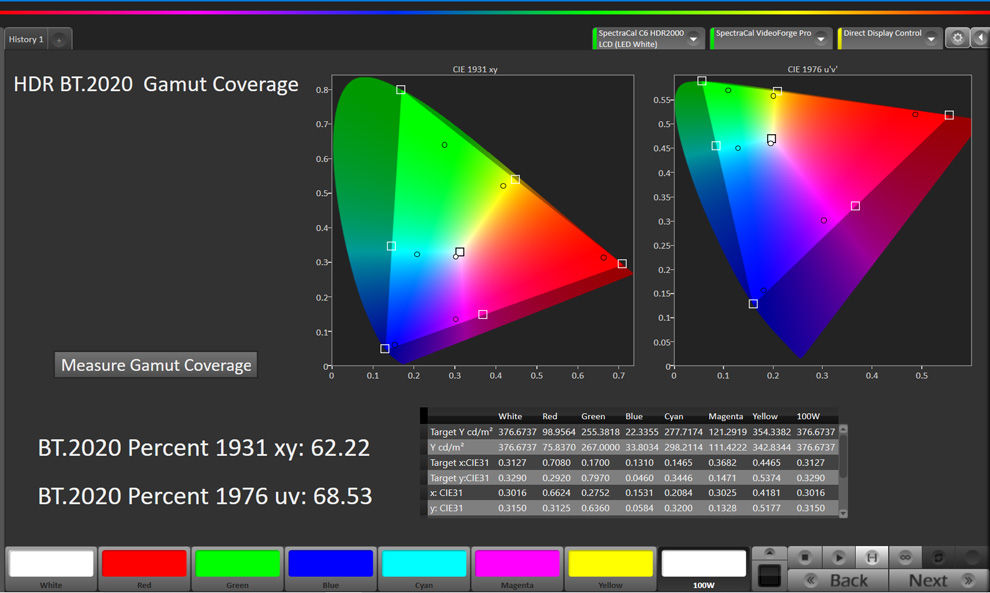
So, overall, the HDR presentation of the TV is a mixed bag.
Xiaomi TV X Series (2023) 65-inch review: Gaming and Audio

The TV appeared quite responsive while gaming. The colours in game mode are once again a little off, but this didn’t bother us much while playing games.
The TV comes with a 30W audio system with Dolby Audio, DTS X and DTS Virtual: X. The audio system gets loud enough to fill an average-sized living room. Dialogues in movies were clear in the default preset. For a decent surround sound experience, you will have to invest in a soundbar or any other external audio system.
Xiaomi TV X Series (2023) 65-inch review: Verdict
Xiaomi is known for its value-for-money TVs in India, and the latest X-series TVs from the brand offer a decent set of features and a large size for a competitive price. While this TV might not align perfectly with the preferences of purists, Xiaomi has optimized the panel to produce vivid and attention-grabbing colours, likely with the intention of appealing to a broader audience. Then again, it might not be as fair to be overly critical about colour accuracy in this price segment. Besides, there are several customization options that you can use to adjust the colours to your liking (to an extent).
Overall, the Xiaomi Smart TV X Series (2023) doesn’t strike as an extraordinary option but it offers fairly decent value and should deliver a decent content viewing experience for most people. The spotlight feature is Xiaomi’s Patchwall and Patchwall+ services which are easy to navigate and make it simpler to discover content.
With the arrival of several new brands, the Indian TV market is now replete with options. Indian manufacturers do have several affordable 65-inch options under different licensed brands like Kodak, Nu, and Acer that might not offer as many features but are available at lower prices and are worth considering for those seeking affordable 65-inch options.
Fuente: Digit
